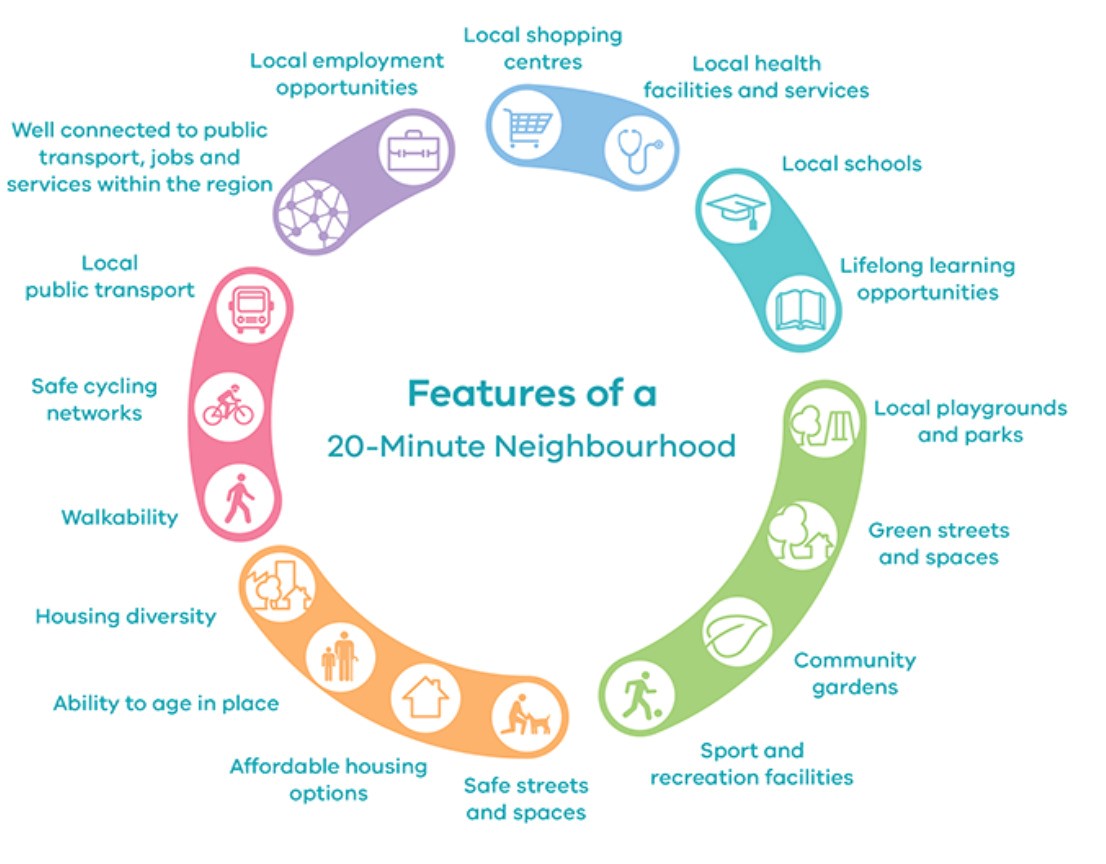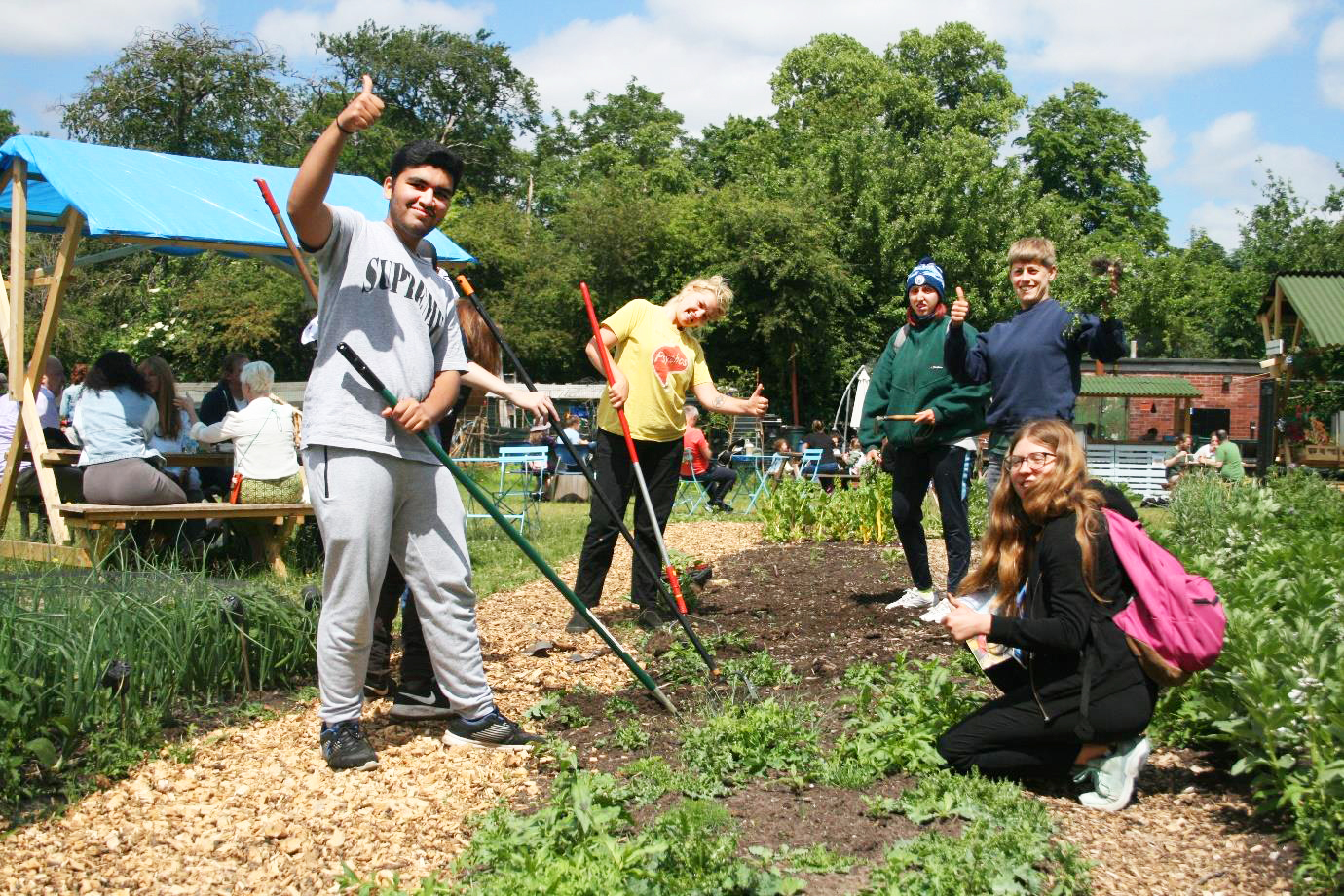‘20-Minute Neighbourhoods’ could transform the way we live locally
Spreading key services equally across neighbourhoods
In a time where anything other than ‘Next Day Delivery’ seems unworthy of the purchase, where we’re connected to societies on the other side of the globe, not by culture but through full-fibre ultra-fast Wi-Fi, it seems strange to ask the question: is everything we need in fact within the proximity of a 20-minute walk or bike ride?

As the COVID-19 pandemic limited individual movement, we felt encouraged more than ever to explore spaces within our boundaries, to shop local and support businesses and to use the time once spent on the working commute to take a short walk around the block.
Though the concept of a 20-minute neighbourhood isn’t necessarily new, the growing conversation around its importance most definitely is. Of-course if you were to ask any home buyer 2 years ago what their desirable’s are, they would most likely talk about the house itself, it’s features and what they are getting for their money. Ask the same question post-lockdown, and a shift towards well-connected transport links, local green spaces and walk-ability reflect the role a neighbourhood can have on happiness and investment.
Melbourne identified the following features as central to their vision for ‘Plan Melbourne’:

Features of a 20-Minute Neighbourhood / Source: Victoria State Government
Melbourne has been embedding the above features for over 10 years now, and evidence suggests that many other big cities across the world would be able to replicate the concept with relative ease, though the same cannot be said about neighbourhoods on the outskirts.
The Conversation has highlighted that local infrastructure and transport links are one of the main barriers for developing 20-minute neighbourhoods within city suburbs, noting that, in Melbourne’s case, “To achieve 20-minute neighbourhoods requires local weekday public transport services running every 20 minutes or better, from around 5am until 11pm (start of last run). That’s a minimum of 55 services per stop per day per direction.”
Gathering neighbourhood level geospatial data to identify gaps in services, as well as potential opportunities could well be the first step towards more accessible and happier places to live. So, what’s happening in Manchester?
Our Streets Chorlton
Our Streets Chorlton is a partnership project that allows residents to be the decision makers in changing their streets for the better. The project is centred on reducing car use and understanding the current relationship our community has with travelling around their area.

Over recent months, the project has been gathering data to understand how local residents travel around the area. Findings from one of Chorlton’s busiest roads, Darley Avenue, show spikes in car usage and pollution levels at 8-9am and 4-5pm each day. Despite the total number of cars in May as 22,952, down 56% from the previous month, this suggests that more can be done to promote active travel on our daily commutes. But rather than blaming the individual for driving, should we first look at the infrastructure, or lack of, at their disposal?
As part of the project, recent School Street Trials across Chorlton have given parents a glimpse at what is possible within a 20-minute radius. It’s encouraged pupils to engage in spaces that were once occupied by cars; learning, playing and socialising all before the 9am bell.

Oswald Road school street closure in Chorlton. One pupil asks “can this happen everyday?”
Food Wave
Food Wave is another really exciting project happening right now in Manchester. Working with young people to understand the importance of climate-friendly food consumption, the Food Wave project is also giving young people a platform to raise awareness of how to source, buy and cook sustainable produce within the proximity of our local areas.
The places we live have a direct impact on our health and well-being. Traditionally, the focal point has always been high streets and local villages, so by developing well connected neighbourhoods with access to quality public transport, we’re able to source sustainable food by shopping locally and in-season, maximise community gardens by growing our own produce and boost local economy.

Young people picking their dinner at Plattfield’s Market Garden
Additionally, Greater Manchester’s ‘Bee Network’, led by TfGM, aims to revolutionise the way we travel in and around our city region, with the ambition to have completed 55 miles of cycling routes by Christmas 2021, along with 17 active neighbourhoods. The 10-year plan is backed by £1.5 billion to create 1,800 miles of routes and 2,400 new crossings connecting every neighbourhood, school, high street and public transport hub in the city-region.
As light starts to shed at the end of the tunnel and we look ahead towards a more sustainable future, how could your community become more connected? How could it provide the opportunity to live more locally; the ability to live, work play and age in one place?
